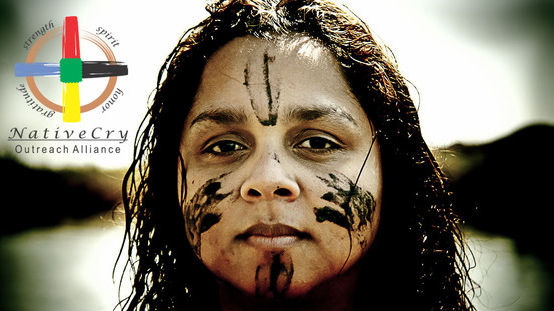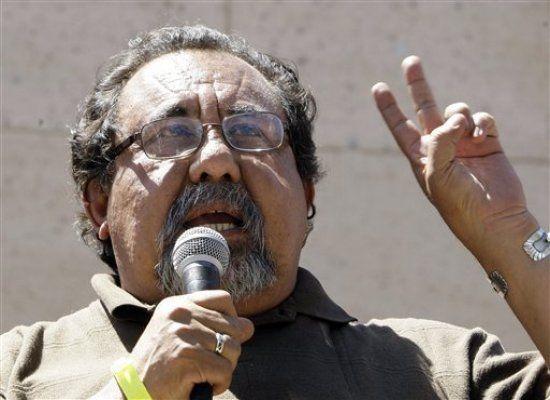Flagstaff,AZ
American Indian Youths and Suicide
Toni M. Turner
Suicide Among Native Youth
Suicide is a serious issue that has had a negative effect globally. Our nation’s children, from around the ages of new teens to young adults, all suffer from internal struggles usually stemming from the social standard put upon them. The stress this age group is found under, as well as the expectations older populations hold for them, can lead to an unstable mind. This is where suicide enters the picture. Specifically Native American communities are known to deal with issues of suicide in regards to their teens. As of recently, many of these Native communities have made it a point to bring this tragedy to the surface by creating multiple organizations for teens, with specifically Native backgrounds, who are dealing with these mental struggles. The goals of these programs are to address this problem and offer opportunities for the teens in these communities, as well as their families, to tend to the roots of the issue. Hopefully, understanding the teens and communicating with them, letting them know the whole community is there to help can show that suicide is not the answer.

The adamant push for suicide prevention has recently been centered in Arizona, and effectively impacting the Native communities in the state. One I'm familiar with in particular, is based in Flagstaff. The Flagstaff community has a beautiful website (logo pictured on the right) that deals with a number of possible family and personal struggles holding suicide prevention as a top priority. According to the Flagstaff community’s website, suicide is the second leading cause of death in Arizona, for those of ages 15 to 34 (NACA, 2016) Other studies show that the rate of suicide among the Native American and Alaskan Native population of the United States is 1.7 times higher than the overall statewide suicide rate (Indian Health Service 1998–1999). More recently, the growing U.S. suicide crisis has been brought to the forefront of the health universe. Community programs are working more tenaciously on the crisis in order to prove that suicide is preventable. One major way scholars are addressing the problem of adolescents contemplating suicide is through determining the possible reasons why.
The Real Reason For Native Suicides?
There are a number of reasons for someone to contemplate suicide. In regards to the research done explicitly for Native tribes and communities, the reasons an individual would contemplate suicide seem endless. A fairly constant occurrence is the relation of substance abuse and the attempts, or successes that have happened in the past among the population. It so happens to be that alcohol was involved in 69% of these completed suicides (Religion and Suicide: Buddhism, Native American and African Religions, Atheism, and Agnosticism, 2009). The most interesting reason for attempted suicide among the Native Americans is their loss of cultural identity.
North America’s Indian communities have struggled ever since the English have settled on the East Coast in 1607. The history of the Native Americans mostly involves them working hard in order to avoid being torn from their cultural roots. After assimilation, coupled with problems of communities no longer being recognized by the American government, the Native people had to fight to be seen as “authentic”. This battle with authenticity causes individuals to worry about their past and what it means to be a Native American in the United States. The pressures of assimilation, the natives being expected to change everything about their identity to become part of the majority, lead to them continually being outcast in the end, because of the background that was taken from them. Having to deal with the question of who they are is a major struggle for America’s Native population. One can only imagine the internal struggles for the youth growing up in an environment where the pressure to be “authentic” and “modern” at the same time is always looming overhead.

Letters from The Dead
Many American Indian tribes and communities across the country are dealing with outbreaks of suicidal behavior among their teens. Researchers have concluded that looking at the suicide letters of completed suicide attempts can give the living insight. Letters from the individuals who have committed suicide leave evidence of what was running through their minds during the decision making process. According to a study that compared different reasons one would commit suicide, showed that alienation was a more common reason with Native Americans than with individuals of Anglo descent. (Suicide Notes Among Native Americans, Hispanics, and Anglos, 2011). Alienation, meaning the feeling of being outcast from society, can easily be translated into something as common as not fitting in, fueled by a loss of cultural identity. This common feeling for most of the world’s youth, where it may apply to school or home, is amplified in the Native community with this expressing the alienation they feel towards specifically North America. Since, over the years, their image has been contorted towards the majority , in most situations people with a Native background are looked at solely as stereotypes, others forgetting that they are infact individuals with personalities and an identity that surpasses their background. Although a persons background is held, especially in cases such as ones we encounter with Native Americans, particularly high.
After Death
The victim’s religious affiliation is shown, through research, to have an important impact on whether or not an individual contemplates suicide in the first place. In the United States there are about 500 tribes actually recognized by the government. Keeping both these tribes as well as those who are not recognized in mind, one can easily infer that the number of different religions among America’s multiple Native tribes is practically impossible to compare each one individually. Therefore, most studies look at the religious beliefs of Native Americans as a whole, noting similar characteristics. Looking at a number of major religions, studies show that Native religions, view the world as a cycle of events. In this cycle death is not the end, but instead the beginning to perhaps a new life. (Religion and Suicide: Buddhism, Native American and African Religions, Atheism, and Agnosticism, 2009) With this belief in mind suicide becomes an escape more than an end, making the action not necessarily easier, but more comforting. With this in mind, adults in the communities all over North America have realized that teens need a stable environment where they can discuss their thoughts in a way that does not challenge their beliefs, but manages to explain why suicide is not the answer. Native tribes and communities recognize that the best way to approach this issue is by making suicide prevention methods more common.

Suicide Prevention Efforts
These organizations, like NACA, Native Cry, and the Indian Health Service’s suicide prevention program reach out to adolescents in order to give them a safe place to express these harmful thoughts and work to get rid of them. Many Native communities are realizing how much of an issue suicide is with their youths, and have recognized how the issue has grown into something more serious over the years, and that it affects more than just the many victim’s families. Arizona is on the frontlines in taking action to prevent the crisis from growing any larger. Arizona congressman, Raúl Grijalva, spoke up about the issue in 2013 and declared he would reintroduce the Native American Suicide Prevention Act to the 113th congress.
The Native American Suicide Prevention Act was first presented to congress in 2012, but due to a lack of supporters it fell through. In recent years, the support has grown and Native communities across the United States recognize that this act is important for the future of their youths, as well as the tribes across the country. The act would allow the government to make sure Native tribes and communities are supporting suicide prevention by monitoring their efforts and making communities obligated to have resources for struggling youth. There is currently a petition up, and I encourage readers to sign it as well as share it with friends and family.
For Further Reading
Alcántara, Carmela, and Joseph P. Gone. "Reviewing Suicide in Native American Communities: Situating Risk and Protective Factors within a Transactional–Ecological Framework." Death Studies 31, no. 5 (2007): 457-77. Accessed February 05, 2016. doi:10.1080/07481180701244587.
Dorgan, Byron L. "The Tragedy of Native American Youth Suicide." Psychological Services 7, no. 3 (2010): 213-18. Accessed February 10, 2016. doi:10.1037/a0020461.
"NativeCry.org." NativeCry.org. Accessed February 15, 2016. http://www.nativecry.org/.
U.S. Department of Health and Human Services. To Live To See the Great Day That Dawns: Preventing Suicide by American Indian and Alaska Native Youth and Young Adults. DHHS Publication SMA (10)-4480, CMHS-NSPL-0196, Printed 2010. Rockville, MD: Center for Mental Health Services, Substance Abuse and Mental Health Services Administration, 2010.
Sources
"Indian Health Service The Federal Health Program for American Indians and Alaska Natives." Indian Health Service (IHS). Accessed April 25, 2016. http://www.ihs.gov/.
Lizardi, D., and R. E. Gearing. "Religion and Suicide: Buddhism, Native American and African Religions, Atheism, and Agnosticism." Journal of Religion and Health J Relig Health 49, no. 3 (2009): 377-84. Accessed April 20, 2016. doi:10.1007/s10943-009-9248-8
Olson, L. M., S. Wahab, C. W. Thompson, and L. Durrant. "Suicide Notes Among Native Americans, Hispanics, and Anglos." Qualitative Health Research 21, no. 11 (2011): 1484-494. Accessed February 05, 2016. doi:10.1177/1049732311412789.
"Serving the Flagstaff Community since 1971." NACA, Inc. Accessed April 25, 2016. http://www.nacainc.org/.